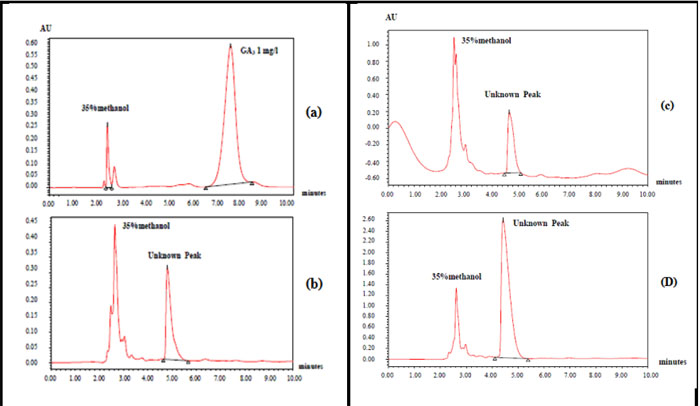The Usage of Gibberellin-Rich Seed-Waste for Vegetable Growth Enhancement: A Case Study of Rambutan Seed
Main Article Content
Abstract
This research aims to study the feasibility of plant growth enhancement by Extracted Gibberellic Compounds (EGCs) of rambutan seed-waste, with 3 extracted solvents: 80% methanol, 80% ethanol and rice whisky, and at the considered ratios (wt./vol.) of rambutan seeds (grams) and extracted solvent (milliliters) of 1:1, 1:2 and 1:3. The growth enhancement was identified through the Lettuce Hypocotyl Bioassays (LHB) method. Among the 5 species of lettuce (Grand rapids, Red cos, Red oak, Red coral, and green oak) for bioassays, the Green Oak lettuce was finally determined to be the representative lettuce for LHB. The 2.1 % of diluted EGC (methanol solvent, ratio 1:1) performed better as a growth enhancer than the other EGAs. Moreover, the same EGC type revealed a non-significant difference of growth enhancement with standard GA3 at 0.1 ppm. (p > 0.05). Therefore, the 2.1% EGC (methanol, 1:1) had gibberellic acid equivalent (GAE) to 0.1 ppm standard GA3. In application to Water Morning Glory growth enhancement, the introduction of EGC (Methanol,1:1) with the dilution ratio 1:1 with water performed significantly different (p<0.05) in height and no-significant difference ( p>0.05) in fresh weight with the control (water).
Article Details
How to Cite
Karawake, K., Nutmagul, W., Navanugraha, C., & Suncharitgul, S. (2014). The Usage of Gibberellin-Rich Seed-Waste for Vegetable Growth Enhancement: A Case Study of Rambutan Seed. Environment and Natural Resources Journal, 12(2), 7–17. retrieved from https://ph02.tci-thaijo.org/index.php/ennrj/article/view/71194
Section
Original Research Articles
Published articles are under the copyright of the Environment and Natural Resources Journal effective when the article is accepted for publication thus granting Environment and Natural Resources Journal all rights for the work so that both parties may be protected from the consequences of unauthorized use. Partially or totally publication of an article elsewhere is possible only after the consent from the editors.

